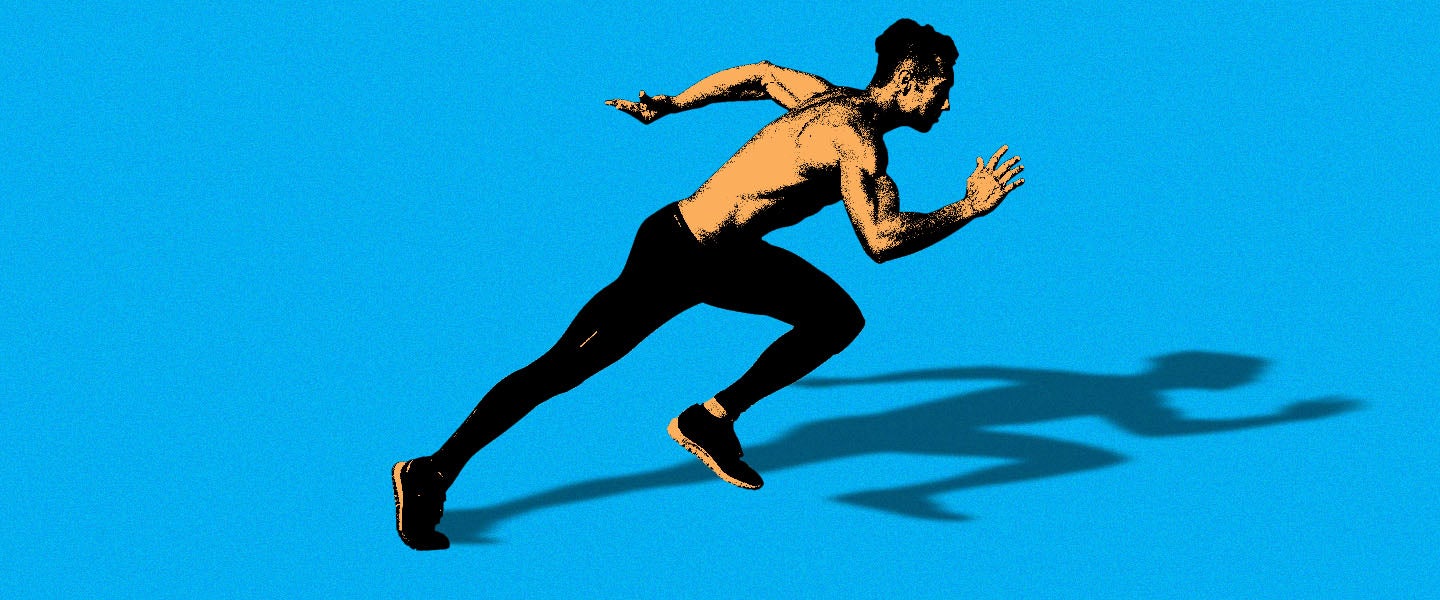Paul Ronto has completed six marathons and so many half-marathons he’s lost count. Whatever the distance, though, in 15 years and thousands of miles of training, he’s ended “almost 100 percent” of his runs with short sprints, or “strides,” as the running community calls them. He swears by them, and believes that if you run for exercise, you should be doing them, too.
What was once a quiet secret among hardcore marathoners and high-school track coaches, ending runs with “strides” — technically speaking, a 100-meter sprint topping out at 95 percent of your speed, repeated three to four times (and after you’ve totally caught your breath between each) — is now catching on in the wider running community. Just like stretching and carb-loading, strides are about to be the hot new topic in casual running conversation.
On Reddit’s running community alone, you’ll find a mounting consensus that if you’re not ending your runs with strides, you might as well not be running. “It’s interesting that high school and university runners all do [strides], but they are relitively [sic] rarely brought up for people taking up running, and I think they could be a lot of help for people having trouble getting faster,” writes redditor BitPlayerVesti. Adds DcDead, “I’ve been doing 3-5 stride at the end of my easy runs. Before I kind of felt ‘rusty’ after, but the strides made that go away completely. Can recommend.”
What Are Strides? Why You Need to be Running Strides from running
“There’s a ton of different reasons behind why strides are good,” Ronto tells me. “They can help you focus on your form; push your heart rate to encourage healthy peaks and recovery in your cardiovascular system; and stretch tight muscles from the repetitiveness of a long run.”
Ronto, the content director for the running-shoe review site RunRepeat.com, says science backs up his methods, too. “When your tank is empty, [strides] are a great way to push your muscles one last time, forcing them to perform, and ultimately over time, get stronger, since sprinting uses slightly different muscles than jogging. Even if it’s just for 15 to 30 seconds, [sprinting] really helps loosen things up and get a boost of energy.”
Matt Huey, a physical therapist in Texas, agrees. When you run longer distances, he explains, your stride may shorten. “Think about how runners look at the start of a marathon compared to the end when they’re shuffling,” he says. So in doing strides, “you work on extending your legs and working them through the range of motion,” which forces you to return to proper running form.
In fact, if you collapse and lay on the ground for 20 minutes after crossing the finish line (like yours truly), you run the risk of injury. “Having your hips dropping or leaning forward too much at the trunk can cause injuries,” Huey explains. “Doing some strides with good form when you’re fatigued will work that muscle memory. It’s easy to have good form when you’re fresh, but run 10 miles, and you can be all over the place. I do this with patients, too. I fatigue them, then I work specific activities that they want to return to.”
Plus, by forcing your legs into proper form and a full range of motion, you’re effectively giving them a good stretch. “Rather than just stopping after a run, strides give the legs and body a little ‘flush,’” Huey says. “People think that soreness is caused by lactic acid build up, but that’s been proven to not be true. The soreness is most likely due to the micro tears that happen, and the increase in sensitivity to pain.” So when strides give the body a “flush,” Huey means that it’s a way of essentially increasing blood flow to your tired legs, “which can help exchange nutrients and oxygen, plus decrease swelling from the blood pooling.”
Better yet, there’s a mental aspect to strides too. “[They give] you an extra hit of endorphins at the end of a long workout,” Ronto says, which he adds can help do the seemingly impossible — make running a habit. “Habits are formed by a cue, a routine and a reward, and if you can find a way to ensure that there’s a bigger reward at the end of a run, like a big hit of dopamine, you’ll more likely associate a positive outlook for future runs, making it easier to lace up your shoes next time.”

